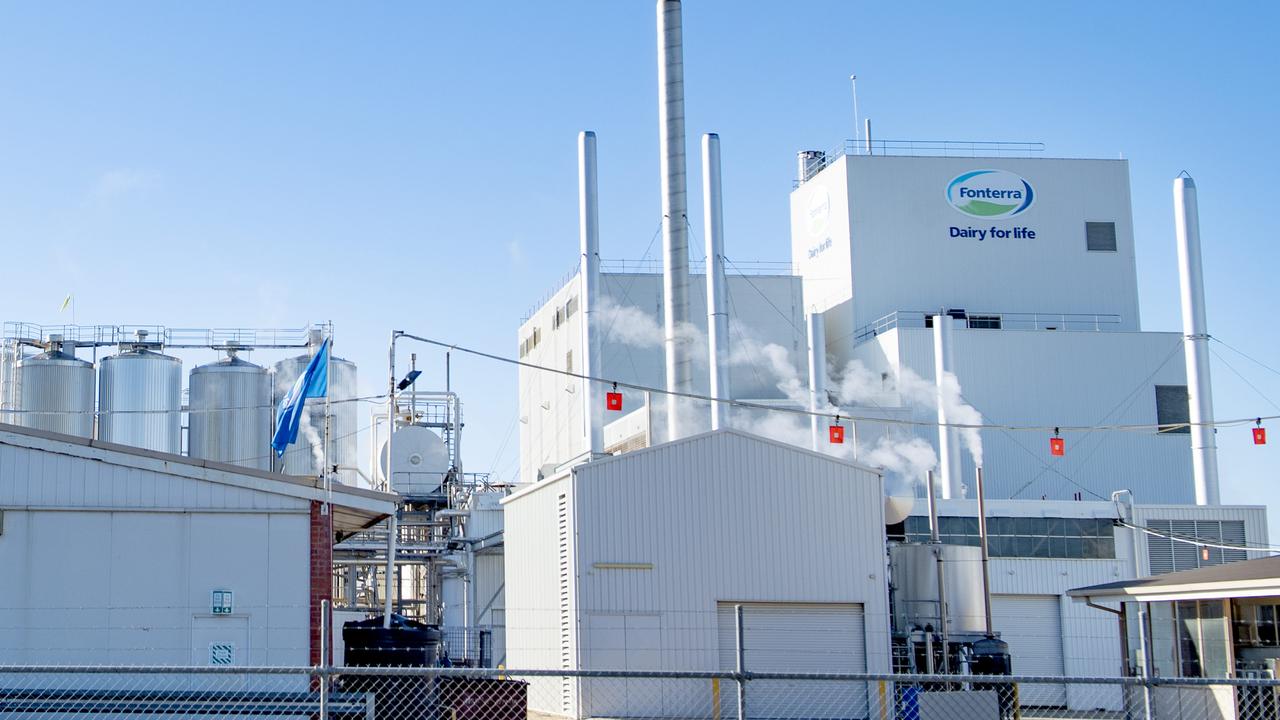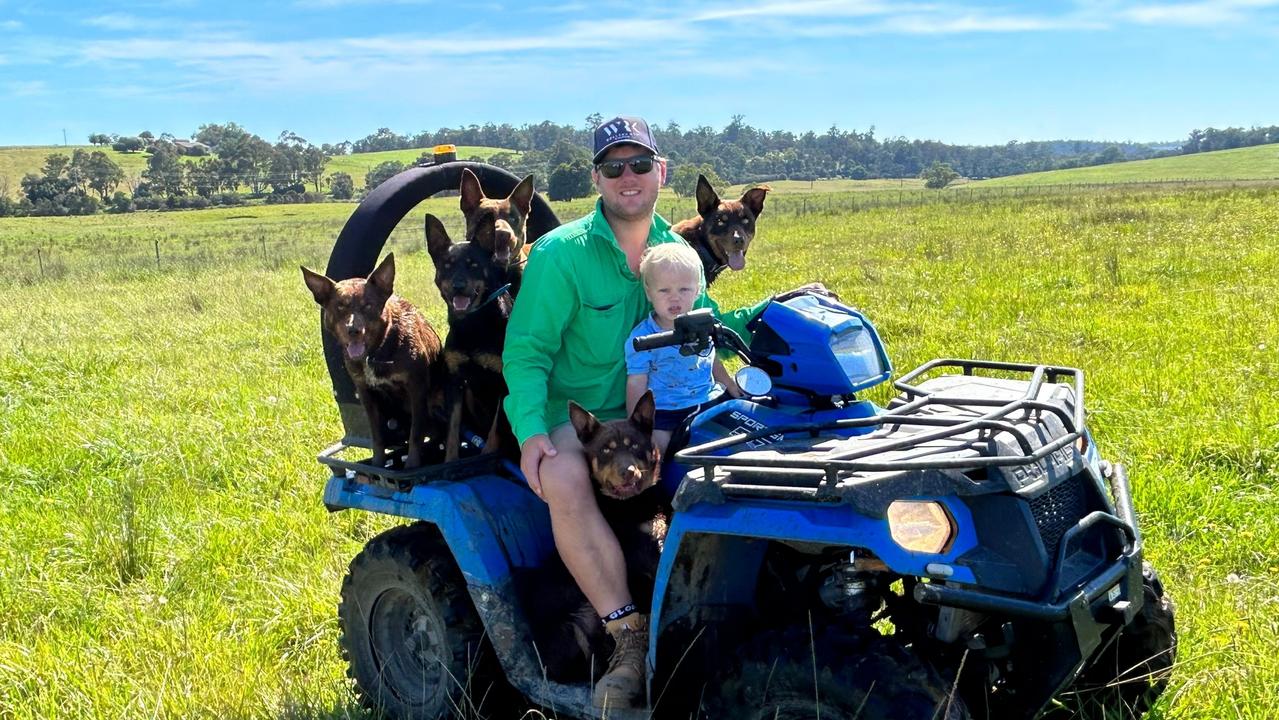Staying focused on what drives profitability is key to the Griffin family’s dairy business
Dairy farmers Stuart and Belinda Griffin aren’t afraid to make changes on farm, and as a result have improved their milk production by 13 per cent.

Maintaining profitability, while also ensuring sustainability and longevity is the goal for the Griffin family.
Stuart and Belinda Griffin, share farm their 300ha dairy farm at Westbury, with Stuart’s parents Chris and Jan Griffin.
With the original dairy first established in 1920, Stuart is the fourth generation to milk cows on the farm, with he and Belinda having also added some of their own land.
The Griffins currently milk 490 crossbred cows on 150ha, with 150ha of turn-out pastures.
The cow breed mix consists of some Friesian, Jersey and Aussie Red cows, joined to Friesian, crossbred or Aussie Red bulls.
“Our breeding principles are pretty simple. We aren’t stuck to one breed, we pick six to eight bulls that have the attributes we want and use one bull each day during out artificial insemination program, across all cows that are on heat, then rotate to a different bull in the team the next day,” Stuart said.

The Griffin’s may seem more traditional in their approach – for one they still have a three to four week dry off period for their cows – but it’s far from the case.
They use farm data, an off-farm consultant and discussion groups and support from their milk processor Fonterra, to help them stay focused on what drives profitability in their business.
This has meant they aren’t afraid to try things or make changes.
And they place a big emphasis on sustainability and longevity of their staff and themselves, prioritising work-life balance.
Stuart, who is 41, came back to the farm in 2010 after studying Veterinary Science and working as a vet for a few years.
“I worked in northern Victoria and found myself more and more on the phone to Dad wondering what was going on, on the farm.
“Dad was involved in advocacy at the time, so I came home initially for six months to get through calving season. There was no pressure from Mum and Dad for me to stay past that point, they allowed me to make my own decision.”
Stuart said his parents were progressive in setting up business structures to allow them all to work on the farm.
“After a couple of years on the farm, my parents were adamant that if we were going to make the farm our career that we needed to get skin in the game and gave us the opportunity to start building our own business.”

SMALL CHANGES ADD UP
A big dairy infrastructure upgrade this year has meant they have moved from 10 in seven milking (where cows are milked 10 times in seven days) back to twice a day milking.
“We are back to twice a day milking for the first year for eight years. For five seasons we did once a day milking and for three seasons we did seven in 10,” Stuart said.
They made the decision to go back to twice a day milking after upgrading their Herringbone dairy to a 50-stand rotary dairy, installing the new plant into the existing shed in under 10 weeks.
Stuart said the main benefits of the new rotary dairy were the efficiencies and then the increased production.
“We’ve reduced milking times, taking 1 hour off milking and one person out of the shed, except during calving,” he said.
Moving back to twice a day milking has increased production significantly.
“When we moved to 10 in seven our milk production increased 15 per cent, and since going back to twice a day, we are up another 13 per cent for the year so far.”
“There are also a lot of other one-percenters that add up over the season – artificial insemination and repro programs, pregnancy testing, vaccinating, clipping freeze brands can all be done during milking,” Stuart said.
The Griffins are targeting 410kg milk solids per cow a year, with each cow receiving on average 1-1.2 tonnes of grain per cow a year.
Cow identification in the dairy and milk metering also provide cow performance information to aid decision making.

EFFICIENCY IS KEY
The herd is single spring calving, with a nine week joining and calving starting on August 1.
The whole herd is “dried off” prior to calving for three to four weeks, to give the Griffins and their employees a break off-farm and from milking, as well as catch up on maintenance.
When selecting bulls they are looking for components of fat and protein production and fertility.
“Fertility is especially important for single calving herds and for us if any cows are not pregnant they are sold off.”
In cows, Stuart said they wanted good udders and overall cow milk efficiency for a pasture based system.
“We try to run efficient cows. We want as many back in calf as possible, and longevity is important because the longer their productive life is, the less time we spend growing out heifers to get to that peak production,” he said.
Cows are artificially inseminated over a three-week period, then are joined to back up bulls for six weeks.
About 25 per cent of progeny are kept as replacement heifers, which are then joined to Jersey bulls to calve at two-years-old.
Some surplus calves are sold to regular beef buyers.
“Every calf on farm is treated the same, regardless of if they are sold or not.”
Pastures are key to the operation, and are all dryland, mostly ryegrass.
Silage is conserved in spring, with most of what they make home grown, and during the past three years around 20 per cent has been purchased as standing grass.
Their stocking rate is 3.2 cows/ha.
Soil testing is carried out every year and fertiliser application is based off that.
“We use urea based fertiliser but we have different blends going on for nine to 10 months of the year,” Stuart said.
“We are looking to maximise growth when conditions are suitable.”
Effluent from the dairy is used as a resource on farm with liquids spread onto pastures throughout the year, and solids emptied from the ponds by tanker every two to three years.

PEOPLE A PRIORITY
Sustainability was a valuable part of the Griffin’s operation.
“We look at three things when looking at sustainability – it has to be sustainable for the environment, for the cows and the people,” Stuart said.
“If we are talking about sustainability for the people working in our business, they need to get out of their job what they need, as well as further training, growth in the dairy industry, and work life balance.”
As well as Stuart, Belinda (who also works off-farm for GippsDairy), Chris and Jan, the Griffins have three permanent part-time employees and two casuals.
“Permanent positions are important because while we do have a dry off period, employees need security in employment in our business.”
Part of their sustainability approach was being proactive on having a work-life balance for everyone who works there.
“Regular days off are really important for our staff. We also prioritise having a break. It really is the only way we switch off is being away from the farm.”
Another pillar of sustainability was profit.
“The farm can’t be sustainable without being profitable, but it can’t be profitable without being sustainable”.

They use farm environmental plans, as well as have long-term involvement in farm discussion groups to benchmark against themselves and others.
“I credit our farming philosophy to involvement with discussion groups. My parents have been involved with one for 40 years, which is purely focused on business performance and very open.”
“There’s a huge amount of experience in those groups. If thinking of trying something, chances are someone already has.
“It helps us keep a focus on what drives profitability in our business.”
Stuart has also been involved with a second discussion group for the past four years, which is aimed at more share farmers and younger farmers.
“It gives us a different perspective, with many in the group at a similar stage in their business as well as family life and the different pressures that can bring. It is invaluable to seek advice and be able to talk through tough times.”





